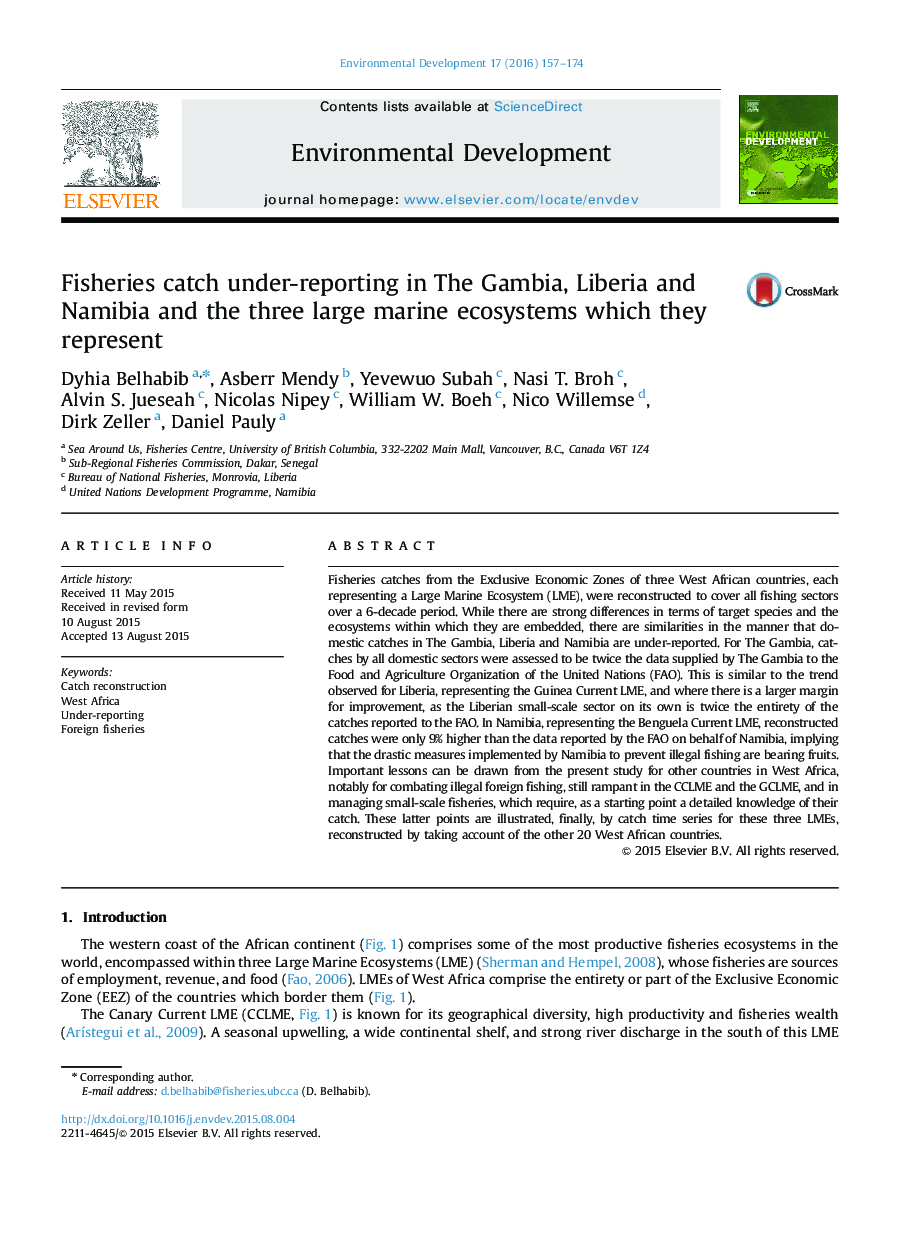| Article ID | Journal | Published Year | Pages | File Type |
|---|---|---|---|---|
| 4391382 | Environmental Development | 2016 | 18 Pages |
•Catch reconstruction methods for The Gambia, Liberia and Namibia are presented.•Fisheries catches in the three LMEs of West Africa are under-reported.•Foreign catches from West Africa are high.•Catches are declining.•Monitoring is improving and under-reporting is declining.
Fisheries catches from the Exclusive Economic Zones of three West African countries, each representing a Large Marine Ecosystem (LME), were reconstructed to cover all fishing sectors over a 6-decade period. While there are strong differences in terms of target species and the ecosystems within which they are embedded, there are similarities in the manner that domestic catches in The Gambia, Liberia and Namibia are under-reported. For The Gambia, catches by all domestic sectors were assessed to be twice the data supplied by The Gambia to the Food and Agriculture Organization of the United Nations (FAO). This is similar to the trend observed for Liberia, representing the Guinea Current LME, and where there is a larger margin for improvement, as the Liberian small-scale sector on its own is twice the entirety of the catches reported to the FAO. In Namibia, representing the Benguela Current LME, reconstructed catches were only 9% higher than the data reported by the FAO on behalf of Namibia, implying that the drastic measures implemented by Namibia to prevent illegal fishing are bearing fruits. Important lessons can be drawn from the present study for other countries in West Africa, notably for combating illegal foreign fishing, still rampant in the CCLME and the GCLME, and in managing small-scale fisheries, which require, as a starting point a detailed knowledge of their catch. These latter points are illustrated, finally, by catch time series for these three LMEs, reconstructed by taking account of the other 20 West African countries.
